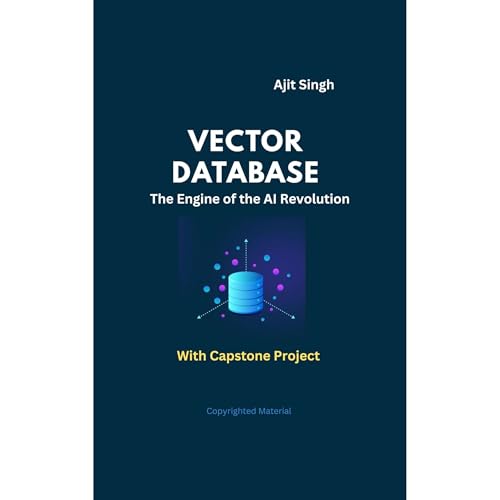
Vector Databases: The Engine of the AI Revolution
No se pudo agregar al carrito
Solo puedes tener X títulos en el carrito para realizar el pago.
Add to Cart failed.
Por favor prueba de nuevo más tarde
Error al Agregar a Lista de Deseos.
Por favor prueba de nuevo más tarde
Error al eliminar de la lista de deseos.
Por favor prueba de nuevo más tarde
Error al añadir a tu biblioteca
Por favor intenta de nuevo
Error al seguir el podcast
Intenta nuevamente
Error al dejar de seguir el podcast
Intenta nuevamente
$0.00 por los primeros 30 días
Escucha audiolibros, podcasts y Audible Originals con Audible Plus por un precio mensual bajo.
Escucha en cualquier momento y en cualquier lugar en tus dispositivos con la aplicación gratuita Audible.
Los suscriptores por primera vez de Audible Plus obtienen su primer mes gratis. Cancela la suscripción en cualquier momento.
Compra ahora por $5.50
-
Narrado por:
-
Virtual Voice
-
De:
-
Ajit Singh

Este título utiliza narración de voz virtual
Voz Virtual es una narración generada por computadora para audiolibros..
Who is this book for?
1. B.Tech and M.Tech Students in Computer Science, IT, and AI/ML specializations.
2. Aspiring AI/ML Engineers and Data Scientists looking to understand the foundational infrastructure of modern AI.
3. Software Developers and Architects who need to integrate semantic search or RAG capabilities into their applications.
4. Academics and Researchers seeking a consolidated resource on the principles and practices of vector data management.
Key Features of This Book:
1. Beginner to Advanced Progression: The book is structured to guide learners smoothly from foundational concepts to advanced, production-level topics, making it suitable for both novices and experienced practitioners.
2. Practical, Hands-On Approach: Every major theoretical concept is followed by a "Hands-On Lab" or a practical example, using popular Python libraries and frameworks to solidify understanding.
3. Real-World Case Studies: Chapters are enriched with case studies from leading tech companies, illustrating how vector databases are used to solve real business problems.
4. Simplified Concepts: Complex algorithms and architectures are broken down into simple, easy-to-understand explanations with intuitive analogies and clear diagrams.
5. Complete Capstone Project: The final chapter provides a complete, line-by-line guide to building a fully functional AI-powered Q&A application, integrating all the concepts learned throughout the book.
6. Covers the Latest Technologies: The book covers the most relevant and widely used vector databases (Milvus, Pinecone, Weaviate, Chroma), algorithms (HNSW), and frameworks (LangChain), ensuring the content is up-to-date and industry-relevant.
The book takes a "first-principles" approach, starting with the fundamental concepts of data, meaning, and vector embeddings, and progressively builds up to advanced topics like distributed database architecture and Retrieval-Augmented Generation (RAG). Its pedagogy is rooted in the hands-on, problem-solving ethos, ensuring that students not only understand the theory but can also apply it to build real-world, intelligent systems.
Todavía no hay opiniones


